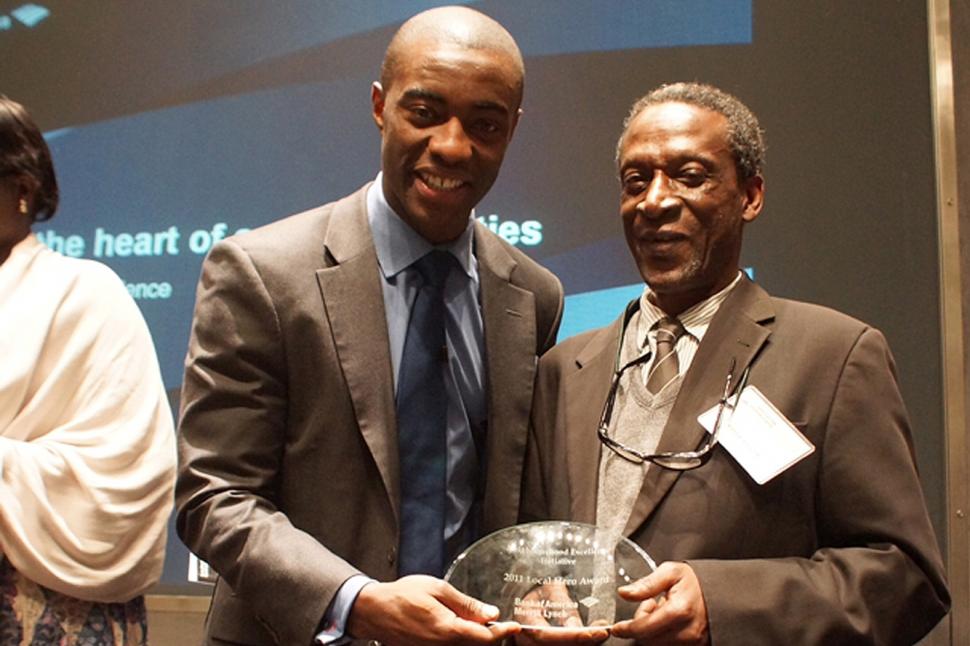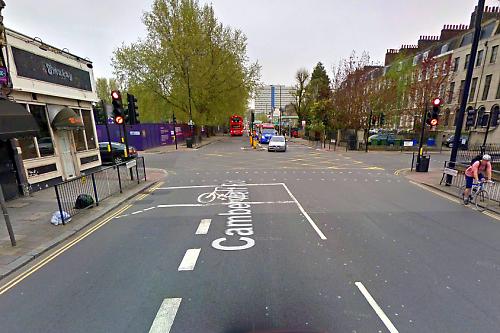- News
- Reviews
- Bikes
- Accessories
- Accessories - misc
- Computer mounts
- Bags
- Bar ends
- Bike bags & cases
- Bottle cages
- Bottles
- Cameras
- Car racks
- Child seats
- Computers
- Glasses
- GPS units
- Helmets
- Lights - front
- Lights - rear
- Lights - sets
- Locks
- Mirrors
- Mudguards
- Racks
- Pumps & CO2 inflators
- Puncture kits
- Reflectives
- Smart watches
- Stands and racks
- Trailers
- Clothing
- Components
- Bar tape & grips
- Bottom brackets
- Brake & gear cables
- Brake & STI levers
- Brake pads & spares
- Brakes
- Cassettes & freewheels
- Chains
- Chainsets & chainrings
- Derailleurs - front
- Derailleurs - rear
- Forks
- Gear levers & shifters
- Groupsets
- Handlebars & extensions
- Headsets
- Hubs
- Inner tubes
- Pedals
- Quick releases & skewers
- Saddles
- Seatposts
- Stems
- Wheels
- Tyres
- Health, fitness and nutrition
- Tools and workshop
- Miscellaneous
- Cross country mountain bikes
- Tubeless valves
- Buyers Guides
- Features
- Forum
- Recommends
- Podcast
 Richard Muzira (right)
Richard Muzira (right)Family of cyclist killed by tipper truck considers civil action after inquest returns finding of 'road traffic collision'
The family of a cyclist killed when he was hit by an HGV in South London is considering civil action after an inquest returned a finding of accidental death.
On Monday, November 18, 2013, Richard Muzira, 61, was dragged under the wheels of a tipper truck which was turning left from Camberwell Road to Albany Road, London.
An air ambulance attempted to save the father-of-four but he died on the way to hospital. He was the six cyclist killed in London within a two week period.
No prosecution has been brought against the driver of the tipper truck. The inquest into Mr Muzira's death, held at Inner South London Coroner’s Court recorded the cause of death to be ‘Road Traffic Collision’.

The junction where Richard Muzira was killed in 2013
His ex-wife Jane Henderson, 57, said in a statement: “Richard was a beloved father and a friend to many in the community through his voluntary work. He believed passionately that people should be able to contribute something to their community.
“The knowledge that people together could make the world a better place was enough for him. We are all devastated by his loss when he still had so much to give."
Originally from Zimbabwe, Richard Muzira had been imprisoned and tortured in his home country before fleeing to the UK. He was described as a “local hero” and a “wonderful man” who had won an award for his voluntary work.
His daughter Niadzi, a 24-year-old web-designer, said: “I’m so proud of my dad. He wrote books, plays and poetry, he was a bit of a maverick. He was always very active learning and teaching himself.”
Mr Muzira had volunteered for many years at mental health charity CoolTan Arts. The organisation’s chief executive Michelle Baharier, said: “You couldn’t ask for a more lovely person than Richard. He was a fantastic friend. He was really community-spirited and was a complete and utter intellectual. He was a very calm and really astute person."
Ms Henderson said that Mr Muzira was a safe cyclist, who did not ride at excessive speeds and always respected other road users and the dangers around him.
She said: “Despite this he has become another cyclist killed in an area of London that has a history of collisions and fatalities. And while TfL has invested in projects and countermeasure aimed at reducing lorry danger, more needs to be done, as seen by the continuing loss of life.
“Cyclists are terribly vulnerable on the roads and more needs to be done to protect them. This includes at the junction where Richard was killed where other cyclists have been injured.”
Mr Muzira’s family has now instructed law firm Slater and Gordon to investigate a potential civil action against the driver of the lorry.
Paul Kitson, specialist cycling injury lawyer at Slater and Gordon, representing the family, said: “Sadly we continue to be involved in a significant numbers of cases were cyclists have suffered serious injury or loss of life on the roads.
“One of the reoccurring themes we see is the high number of fatalities in which a heavy good vehicle is involved. It is clear we need to educate road users and build appropriate infrastructure to protect pedestrians, cyclists and motorists from further fatalities.”
So far this year five cyclists have died in collisions with motor vehicles in London. HGVs have been involved in all five, and four involved construction vehicles similar to the one that killed Richard Muzira.
John has been writing about bikes and cycling for over 30 years since discovering that people were mug enough to pay him for it rather than expecting him to do an honest day's work.
He was heavily involved in the mountain bike boom of the late 1980s as a racer, team manager and race promoter, and that led to writing for Mountain Biking UK magazine shortly after its inception. He got the gig by phoning up the editor and telling him the magazine was rubbish and he could do better. Rather than telling him to get lost, MBUK editor Tym Manley called John’s bluff and the rest is history.
Since then he has worked on MTB Pro magazine and was editor of Maximum Mountain Bike and Australian Mountain Bike magazines, before switching to the web in 2000 to work for CyclingNews.com. Along with road.cc founder Tony Farrelly, John was on the launch team for BikeRadar.com and subsequently became editor in chief of Future Publishing’s group of cycling magazines and websites, including Cycling Plus, MBUK, What Mountain Bike and Procycling.
John has also written for Cyclist magazine, edited the BikeMagic website and was founding editor of TotalWomensCycling.com before handing over to someone far more representative of the site's main audience.
He joined road.cc in 2013. He lives in Cambridge where the lack of hills is more than made up for by the headwinds.
Latest Comments
- brooksby 4 min ago
Maybe... I was taking a slightly wider interpretation, just *bringing* Nazis and Hitler into an argument
- mdavidford 45 min 17 sec ago
Presumably not featuring the miserable- looking pair who've been made to wear their kit?
- KiwiMike 1 hour 35 min ago
I have a NordVPN sub for using WiFi when travelling. ...
- chrisonabike 2 hours 25 min ago
There's a lot about, and once you're "woke" or sensitised to it it's hard not to see it. However I think it's essentially a category difference if...
- chrisonabike 2 hours 51 min ago
Good point. Although are they organised? Also fruitcakes have something to be said for them, even if they're a bit nutty.
- chrisonabike 2 hours 45 min ago
As a summary - hopefully we can do both eg. small but more achievable things that are slightly helpful for the cyclists of today....
- slc 5 hours 54 min ago
I'm really not sure. It was always a road I used on the bike because it is a fair bit quieter than the alternatives. There is often poor driving in...
- mdavidford 6 hours 29 min ago
Bonus video, and a police driver: https://www.bbc.co.uk/news/articles/c98yr0z9r1ro
Add new comment
7 comments
It’s one of my cycle routes. Typical London cross roads, with very sharp corners, staggered waiting lines, but with surprisingly high lorry movements off peak due to the huge number of London developments, trades vehicles, and local access routes to Council dump sites etc.
What were the details of the accident of how it happened? Was the driver really faultless.. or.. was it that CPS/Police thought judges/juries are too vehicle driver biased now (based from other court precedents) to provide a realistic chance of a conviction?
They could start by removing the railings. That at least gives cyclists who've made a mistake the chance to bail off onto the pavement.
The timing of the lights is pretty bad too and doesn't help.
When I go that way (to the Burgess Park Track) I generally ride through the park and exit a bit further down. As the vehicle traffic is often stationary, you can then filter. Another option is to use the pedestrian crossing and then switch to the back streets, which are quieter and less dangerous.
It is a very bad junction and one that's close to Peckham BMX Club track in Burgess Park, so as well as the high volume of commuter traffic there are also many young riders going to and from the track. It does need improving as a priority, as this fatal incident reveals.
I did used to go to the CoolTan Arts centre back in the day so I probably met the victim at some point in the past. I sincerely hope his family can carry out their civil action and they have my sympathies.
It looks about the same as a million others across the country - the issue is the hint of cycle lane before the additional stop line that encourages cyclists to go up the inside of potentially big things like HGV lorries waiting at junctions.
Yes, there are a lot of junctions that look like that in the UK. This one does have a very high traffic flow however and has been the scene of a fatal traffic crash, plus a number of serious injuries in separate incidents. Because this is a major route and because there has been a fatal incident, Transport for London has a requirement to carry out a safety check of the junction, which it should not be able to pass.
I know this junction well as I use the route regularly (and used to use very regularly). I've been through it on the bus, driving my car, driving my motorbike and riding my bike. It's horrible. It needs fixing.
It narrows a bit on the south side as well.